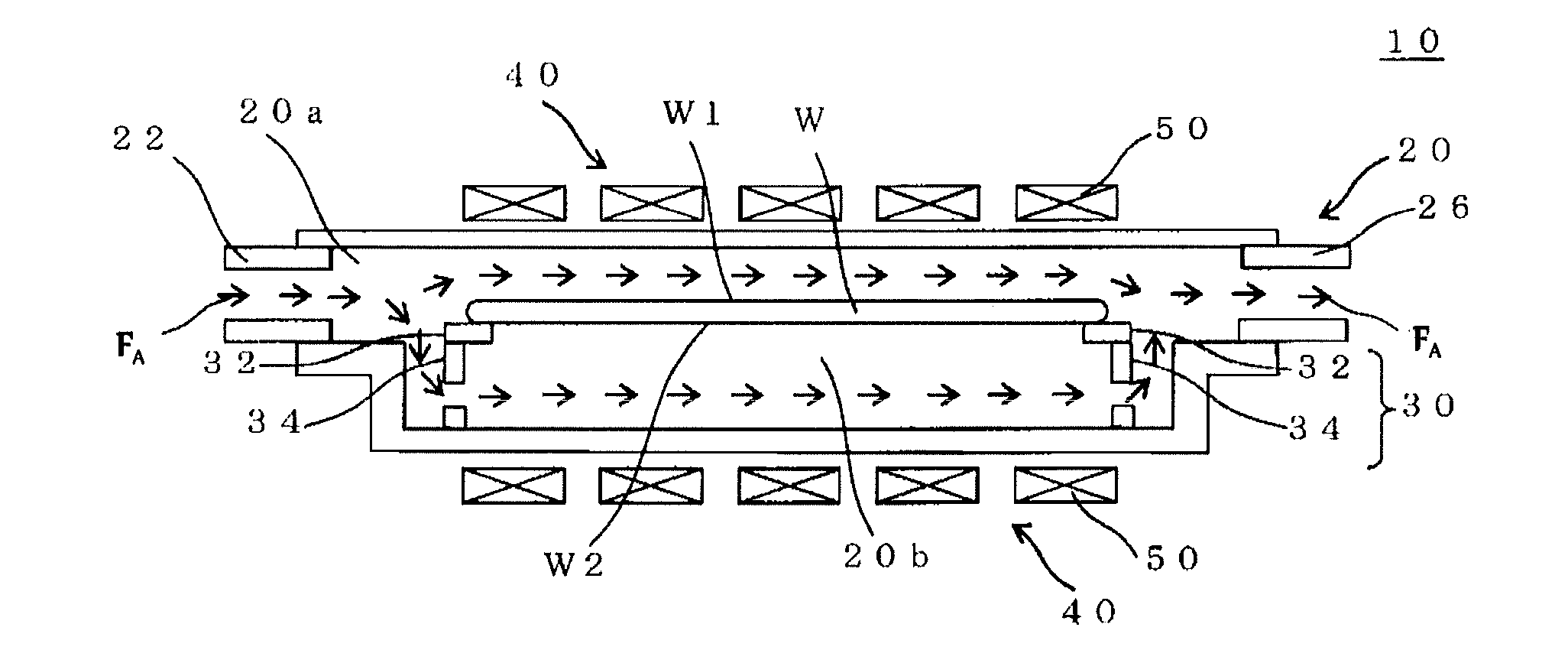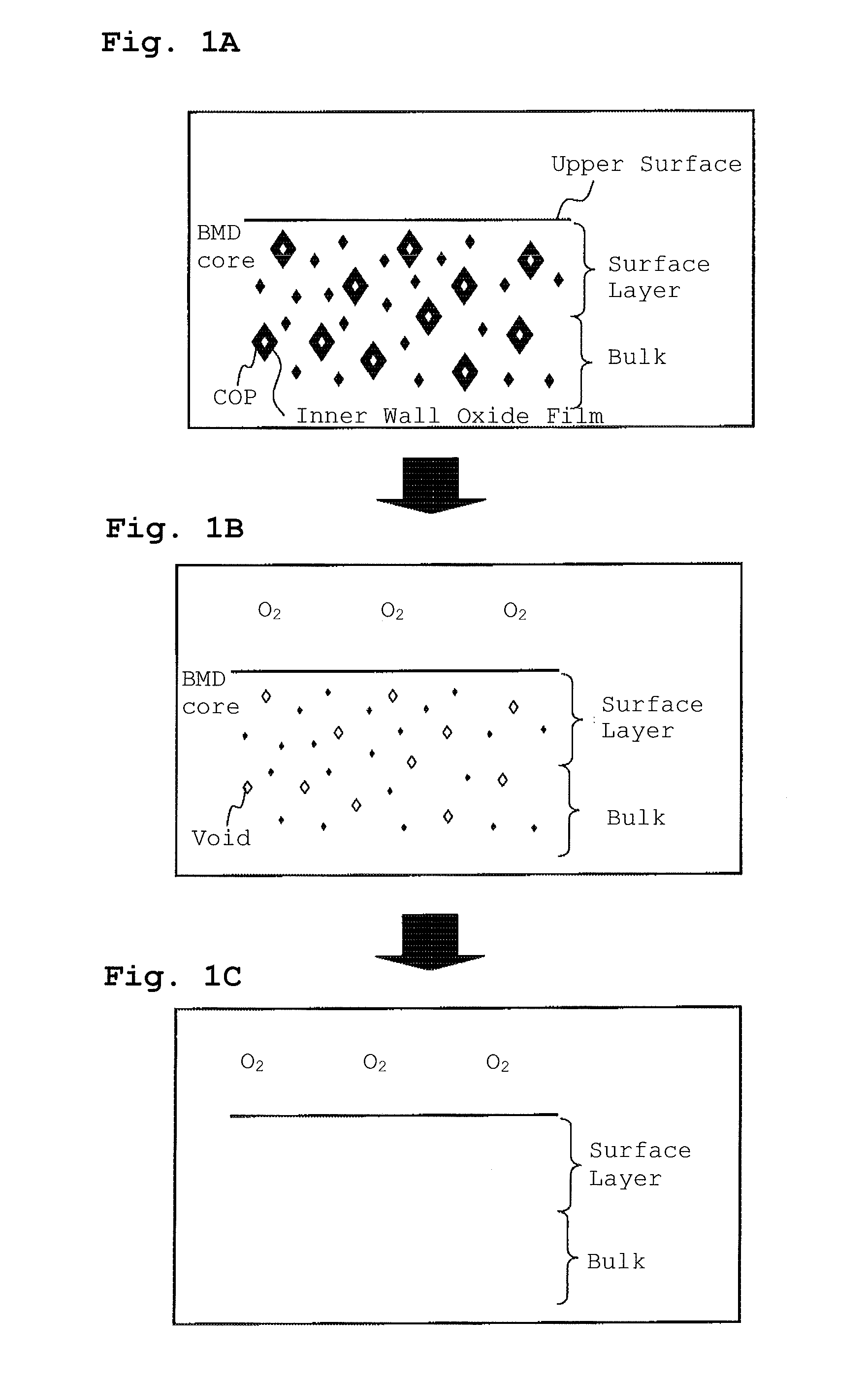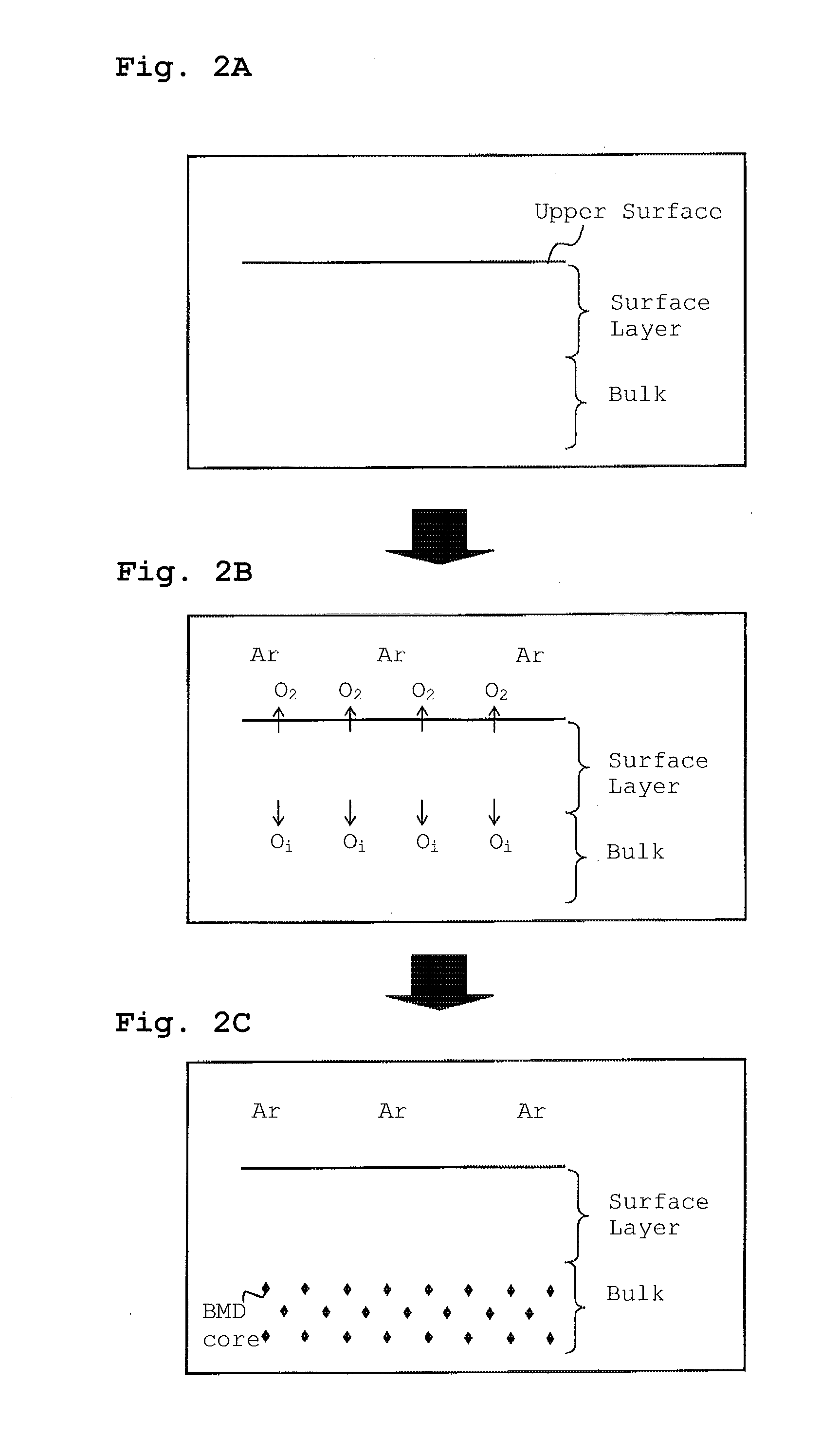Method for heat-treating silicon wafer
a technology of silicon wafers and heat-treating sheets, which is applied in the direction of lighting and heating apparatus, charge manipulation, furniture, etc., can solve the problems of high cost, reduced growth rate, and possible slip dislocation, so as to improve the in-plane uniformity in bmd size, improve the in-plane uniformity, and reduce the cop
- Summary
- Abstract
- Description
- Claims
- Application Information
AI Technical Summary
Benefits of technology
Problems solved by technology
Method used
Image
Examples
examples
[0130]Hereinafter, the present invention will be described more particularly with reference to Examples; however, the following Examples should not be construed as limiting the present invention.
experiment 1
(Experiment 1)
[0131]By way of the CZ process, a silicon single crystal ingot was grown by controlling a V / G ratio (V: pull rate, G: average of temperature gradients in a crystal in the direction of a raising axis in a temperature range from melting point of silicon to 1300° C.). A lot of vacancies (COP) were taken in the ingot to have a V-rich region and an OSF ring was generated, when sliced, at a part within a plane of the wafer. The silicon wafer (with a diameter of 300 mm, a thickness of 775 μm, and an oxygen concentration of 1.2×1018 to 1.3×1018 atoms / cm3) which was sliced from the above-mentioned region and in which both its sides were mirror polished was placed in a reaction space, which was held at 400° C., of a known RTP apparatus. Then, with a temperature sequence as shown in FIG. 7, a first heat treatment was performed in a gas (flow rate: 20 slm) atmosphere of 100% oxygen such that the wafer was heated at a heating rate of 50° C. / second for a retention time of 15 seconds...
experiment 2
(Experiment 2)
[0143]The maximum target temperatures in the above-mentioned first heat treatment were set as 1325° C., 1350° C., and 1380° C., and the cooling rate was set as 50° C. / second. Further, by varying the second maximum target temperature, the second heat treatment was performed under the same conditions as those in Examination 1 except for the varied temperatures.
[0144]Next, similar to Experiment 1, as for the wafer subjected to the above-mentioned second heat treatment, the number of defects at the surface layer in a region of from the surface of the wafer subjected to the above-mentioned second heat treatment to a depth of 5 μm was evaluated using the LSTD scanner MO601 manufactured by Raytex Corporation to calculate the defect density.
[0145]Furthermore, by means of the X-ray topography (XRT300, manufactured by Rigaku Corporation), a length of a slip was evaluated which was generated at the back of the wafer subjected to the above-mentioned second heat treatment.
[0146]Tab...
PUM
| Property | Measurement | Unit |
|---|---|---|
| temperature | aaaaa | aaaaa |
| temperature | aaaaa | aaaaa |
| temperature | aaaaa | aaaaa |
Abstract
Description
Claims
Application Information
 Login to View More
Login to View More - R&D
- Intellectual Property
- Life Sciences
- Materials
- Tech Scout
- Unparalleled Data Quality
- Higher Quality Content
- 60% Fewer Hallucinations
Browse by: Latest US Patents, China's latest patents, Technical Efficacy Thesaurus, Application Domain, Technology Topic, Popular Technical Reports.
© 2025 PatSnap. All rights reserved.Legal|Privacy policy|Modern Slavery Act Transparency Statement|Sitemap|About US| Contact US: help@patsnap.com



